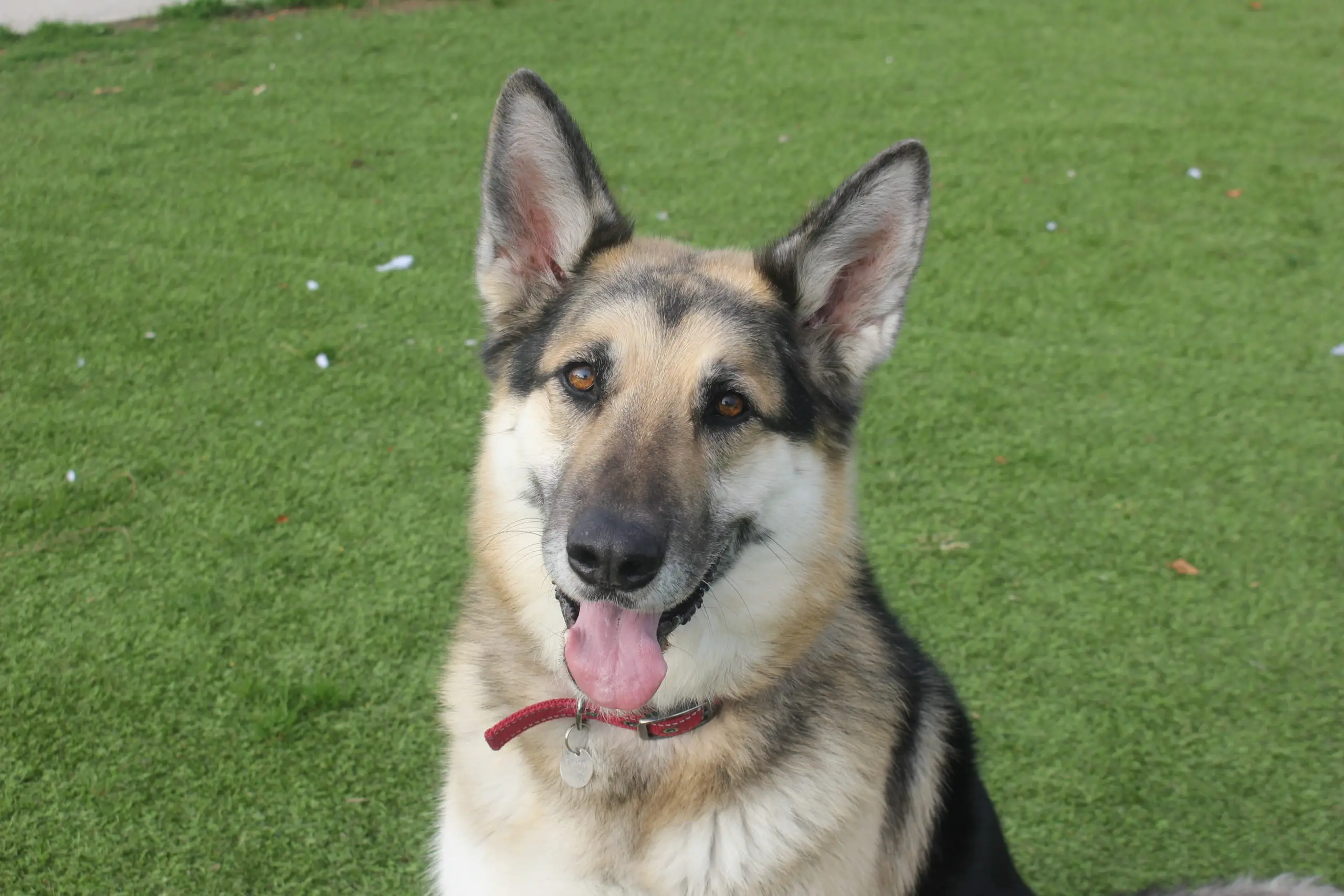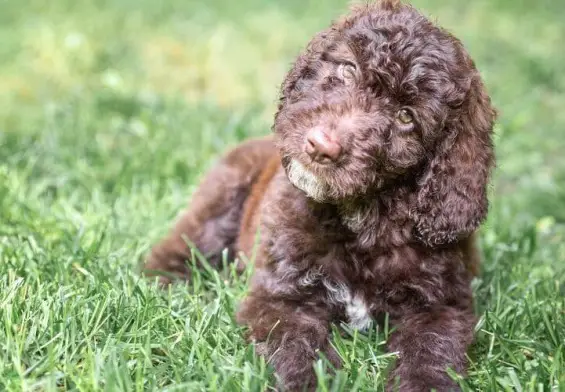Malamute German Shepherd Hybrid Cross Mix Dog Breed Guide
Dogs have served us since time immemorial as workers, hunters, herders and have even been some of the best companions we could hope for. If a working dog that can live and relate well with the family would interest you, you may love the German Shepherd Malamute mix.
Over the years, we have tried many dog mixes, interbreeding them, and understanding the resulting breeds. A German Shepherd Malamute mix, otherwise known as the Alaskan Shepherd, was first bred long ago to serve the very purpose that their parents did, but with a combination of their traits, making them some of the best dogs to have.
You may already know a German Shepherd for its intelligence; this dog appears in various platforms and establishments, some being the military, the police, and even in homes or homes for the old and blind. Their personalities suit them for protection, searches, exercises, and in the case of old folks or the blind, they provide amazing guidance.
Otherwise known as GSDs, many dogs’ owners desire to have them if they already do not; you may not expect much challenges, if any, with their feeding, training, grooming, and even socialization. However, their protective nature makes it necessary to train and expose these dogs from an early age.
Many people know the Alaskan Malamute for its strength and muscularity; this dog finds a perfect home with families with heavy weights to move for long distances and is also well-suited for pulling sleds. The dog has a strikingly bold personality, and is often loyal, playful, and will often run around or roam.
Families and individuals who own the Alaskan Malamute may be happy with their aid with work and their easy-going traits. While they are relatively sociable, you may want to consider early training and exposure to prevent their hostility with strangers—Malamutes tend to be protective and wary of strange faces.
A combination of these two amazing breeds gives rise to some of the most lovable dogs. You can already note desirable traits, which Alaskan Shepherds are likely to acquire from their parents; these traits make the dogs suitable for families. However, due to their playfulness and size, they will do well in a more spacious and enclosed home.
With all the available dog mixes, where to start can confuse you. If you have come this far, then you are already on a choice that is unlikely to disappoint; so, what can we learn about the Alaskan Shepherd? There is plenty I would like to leave you.
Before purchasing any dog, it is a good idea to be conversant with their histories, appearance/traits, care, size, training, and significant health concerns. We will discuss these, among more, to determine what could work best for you and help you gauge how easy or possible it will be to live with your new guest or already-owned pooch.
The German Shepherd Malamute
As we have noted, you may know this dog alternatively as the Alaskan Shepherd. Due to the combination of its parents’ traits, most mixes feature powerful and muscular working dogs with no trouble pulling sleds or carrying heavy loads over great distances.
You may also find these dogs to be loving and loyal. Therefore, they relate well to family members and familiar faces. Their protective nature also makes the Alaskan Shepherd a perfect watchdog for a large family or an enclosed home.
History
The German Shepherd has an interesting history, which traces its roots through history to a German cavalry officer named Max Von Stephaniz; he wanted an intelligent dog that could work yet remain loyal to its owner, besides offering protection.
Thus, Max first bred the German Shepherd from sheepdogs. Over time, he spread the breed, which has since made it to various ends of the world. Today, we love the GSD for its aptness, speed, intelligence (you will see a lot of this because they are), and even their sweet nature.
On the other hand, the Alaskan Malamute is one of the oldest breeds you will encounter; it traces its roots through history to the Paleolithic period, when men hunted. As it developed, the pooch served various other purposes, like pulling heavy loads over long distances.
Breeders and dog owners in North America know the Alaskan Malamute as a domesticated wolf, making its way into the country roughly 4,000 years ago from Bering Strait; thus, it became one of the arctic’s oldest sled dogs. Today, we love the Alaskan Malamute for its muscularity, strength, and playfulness.
On Screens
If you are a fan of movies and television shows, you may have noticed both the German Shepherd and Malamute—they are famous breeds with the muscle and minds to show. Therefore, the GSD appeared in the Eight Below (a movie), and the GSD appeared in The Littlest Hobo (a television show), and I Am Legend (a movie).
Mixed Breed or Pure Breed?
Dog breeders and owners have varied preferences of the nature of the breeds they keep or acquire. For a long time, there has been a debate on whether mixed breeds and better than pure breeds, or vice-versa; the debate lives on and may not end soon. What do we know about the two?
Mixed breeders hold health as an essential factor to consider. Therefore, they believe that their breeds tend to be healthier and experience lesser complications than pure breeders, with diversity as the key to this state.
On the other hand, pure breeders go for control, holding too that the nature of their breeding results in healthier dogs. From their perspective, control over breeding allows for easier determination and management of a pooch’s health.
If you are here, then you perhaps believe that mixed breeds have plenty to love about them. We cannot ignore the point that pure breeders make, considering that we have owned most of such dogs or will at some point seek them—at the end of the day, go for what works for you.
Appearance
Mixed breeds can either take after both parents entirely or combine characteristics and physical features or attributes. Alaskan Shepherds take after both parents; however, you will come across dogs that take more after one of the parents.
We know that the German Shepherd was originally a working dog—a sheepdog and a herder. They are apt, loyal, playful, and easily lovable, among other traits any dog parent would go for. You can easily tell one by its relatively long and pointed ears, relatively long tongue, and an elongated nose.
We know that the Malamute was first a working dog; they hunted seals, pulled heavy loads over long distances, and ferried camp supplies or food. They were also kept as companions to fend off polar bears.
Malamutes are as friendly and lovable as GSDs. Additionally, they are strong-willed and playful. You can easily tell one by its short, pointed ears; its facial features, compared to a GSD’s, are relatively shorter.
Their German Shepherd Malamute mix, as we have noted, can resemble both parents and thus share their facial and physical features. Besides companionship, we keep these dogs for work—their strength suits them for pulling sleds and carrying heavy loads.
Most dogs that result from this mix are medium to large-sized, ranging in height between 21 and 28 inches, and weighing an average of 64 to 130 lbs. Most homes love to keep medium-sized dogs; nevertheless, the Alaskan Shepherd performs exceptionally and looks lovable from its standard or medium size.
The mix’s double coat is straight and medium-length. You will note the outercoat’s thickness and its rough texture, taking after both the Malamute and GSD; however, the undercoat is as dense as a Malamute’s and as soft as a German Shepherd’s.
These dogs are beautiful in their combined brown, red, black, grey, and gold coats. From a distance, they look like German Shepherds, but on closer observation, their facial features give way to possibilities of a mix, which in this case, is an Alaskan Shepherd.
Eyes are another identifying feature; often, they come blue, hazel, or brown. Their noses, which are a precise combination of both parents, can be brown or black. If you have not seen these dogs before, I hope the above descriptions give you a good picture of how they look like.
Temperament
Pooches’ temperaments tell you a lot about how easy it will be to live with and train them. Alaskan Shepherds are not the easiest-going dogs, but there is plenty about their character that makes them suitable for various homes.
Over time, these dogs tend to develop attachments to their owners, as is the case with their parent breeds. Their loyalty, among more, makes them lovable; they relate well with children; however, due to their size, it is a good idea to watch the dogs’ interactions with babies.
They tend to be protective and wary of strangers, thanks to the GSD’s alertness and vigilance; these make Alaskan Shepherds good watch or guard dogs. Their courage is something else to be happy about, along with the GSD’s intelligence that the Alaskan Shepherds possess.
However, like the Malamute, this mix values independence and is strong-willed. Training them (which we will discuss next) calls for patience and positive reinforcements. It is also a good idea to mentally engage your pooch; keep the Alaskan Shepherd active with physical and mental activities.
Training
Early socialization gives every dog a good sense of its environment and the people or animals in it. Therefore, you may find it helpful to introduce your pooch to various faces and pets from an early age to prevent their possible aggression to strangers.
Early training imparts good behavior in your pooch, making it less likely to be disobedient or stubborn. With the Malamute’s independence and strong will in mind, you may find it best to train your dog as a puppy; consistent positive reinforcement can give you desired results.
Exercises are also critical to your Alaskan Shepherd’s good health and development. Every day, you consider taking them for hikes, walks, and whenever possible, jogs! Dogs tend to get destructive, physically inactive, or unhealthy when you do not meet their energy requirements.
Every day, consider some physical activity; while your schedule can determine how long the exercise will run, it is a good idea to work with a 1-hour target. These dogs’ activities and energies may require space large enough for them—a large yard is ideal.
Health
Before getting a dog, please find out about its health and any complications common to its breed for an early determination of care or treatment costs. Most people seek healthy pooches. The Alaskan Shepherd may not be prone to various illnesses; however, you should watch out for the following:
- Cartilaginous Exostosis- bone disorder (prone in Malamutes).
- Chondrodysplasia- bone disorder (prone in Malamutes).
- Degenerative Myelopathy- spinal cord disorder (prone in GSDs).
- Obesity- overeating disorder (prone in GSDs).
- Von Willebrand disease- blood disorder.
Alaskan Shepherds live for an average of 10 to 13 years. They do well with proper care. Whenever you can, get your pooch the following tests or checks:
- Elbow and hip evaluation.
- Eyes evaluation (by an ophthalmologist).
- Polyneuropathy test (for nerves evaluation)
Grooming
Every week, brush your Alaskan Shepherd’s coat two to three times; a de-shedder will remove your dog’s underlying hair better than a brush. Besides checking and cleaning their ears and teeth regularly, you should also trim their nails.
Final Words
The German Shepherd Malamute mix is a beautiful, loyal and strong dog. Every home would be happy to have one; the pooch’s friendly nature makes it suitable for families with children (supervise their interaction with babies due to their size), and its protectiveness makes it a good guard dog.
Additionally, you may not find this the easiest dog to train, following that it can be stubborn and independent; its energy requirements also make daily physical and mental stimulation essential. Remember that ample space will ensure their comfort, and early socialization will help take care of its aggression.
If you plan to get an Alaskan Shepherd, you can rescue one from a shelter.





